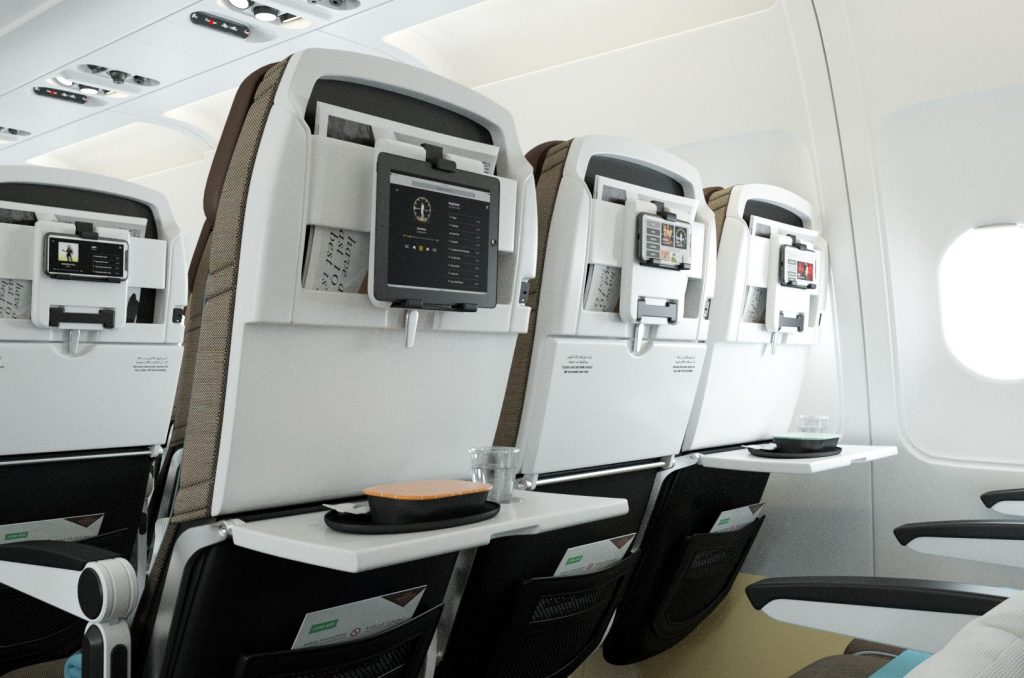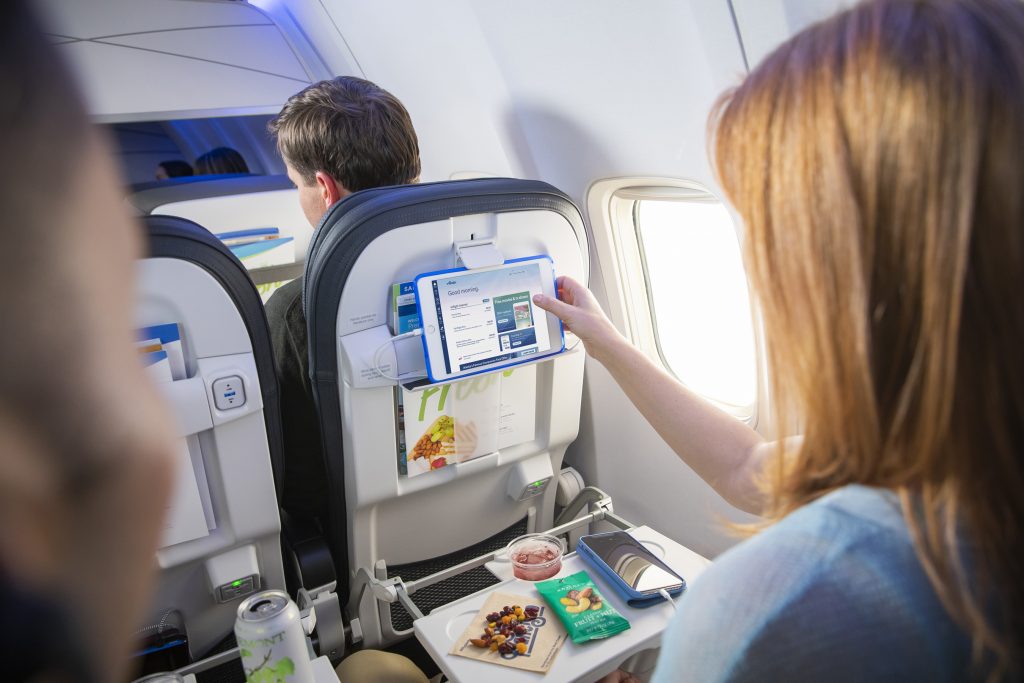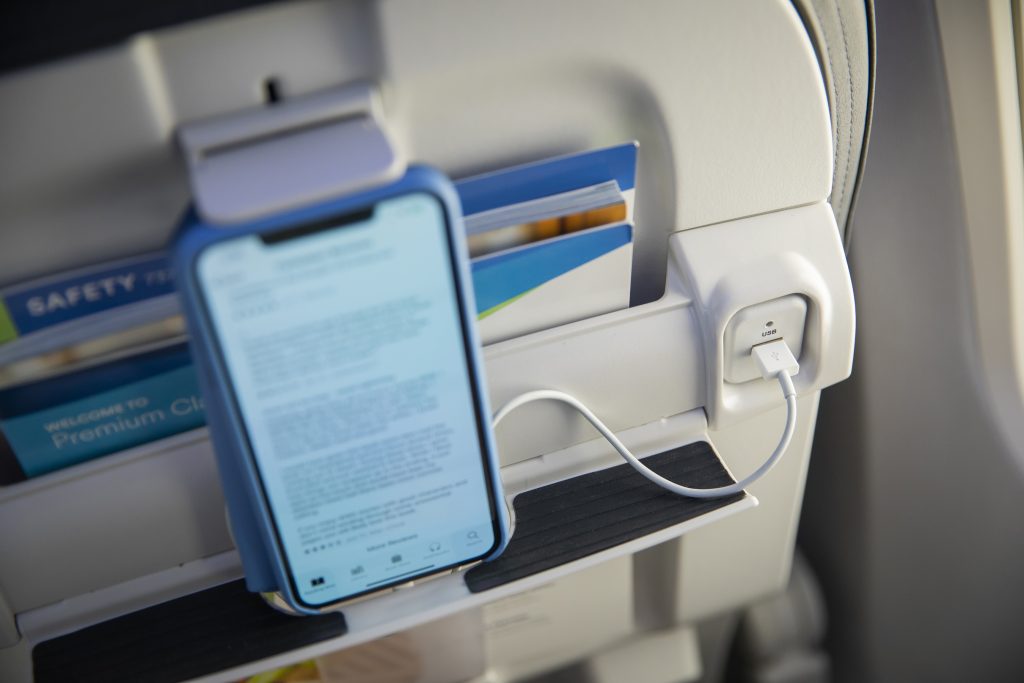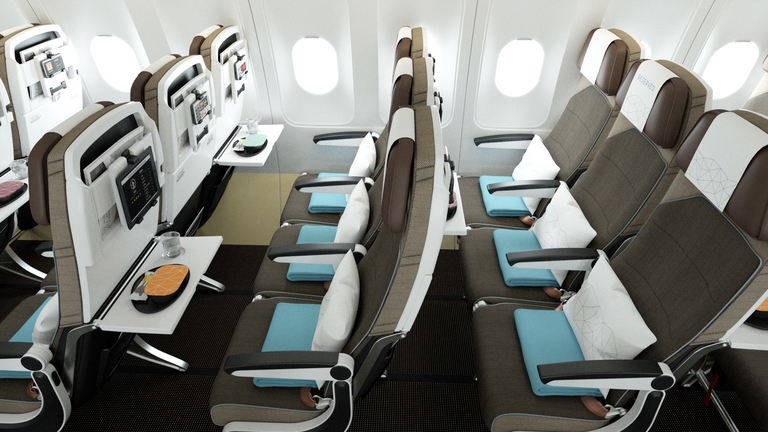
Let me start off by saying that ‘Bring Your Own Device’ (BYOD) entertainment streaming – a service that a growing number of airlines from full-service to ultra-low-cost are starting to offer – isn’t necessarily a bad thing. In fact, in the right circumstances, the ability to access free entertainment on your own tablet or smartphone is an amazing opportunity to truly improve the passenger experience.
Yet there’s one big problem that airlines seem to be ignoring and it could prove to be the deathknell of BYOD entertainment.
But first, let’s discuss why we’re even talking about this – yesterday, Etihad Airways joined the list of airlines that will offer BYOD streaming entertainment for free. The Abu Dhabi-based airline also joined a relatively small but significant group of airlines that have chosen to rip out individual seatback screens on certain aircraft and offer BYOD as the only entertainment option.

The primary reason is pretty simply – personal television screens at every seat weigh a lot. Removing them reduces weight and therefore fuel burn. Installing and maintaining these IFE systems is also an expensive business, so airlines can reap significant savings from doing away with seatback screens.
On a long-haul flight, passengers are probably going to value seatback screens with hundreds of hours of ondemand entertainment and other bells and whistles but on shorter flights, airlines can take a calculated risk that passengers are going to base their purchasing decision primarily on price.
Yeah, no seatback entertainment is a disappointment but it’s not a deal breaker – especially if the price and schedule suit your needs.
American Airlines has already gone down a similar road as the one Etihad is venturing on and while the decision to remove seatback televisions isn’t popular, consumers are still choosing to fly with the airline while American reaps the benefit of a lighter plane with fewer maintenance needs.
Some carriers – most notably Emirates and Delta – have chosen a different tact and have differentiated themselves on offering individual screens. Emirates has pretty much won every award going for its IFE system that it dubs ICE – Information, Communication and Entertainment just so you know.

But the advancement of personal entertainment equipment like tablets and smartphones moves a lot quicker than what’s available to airlines in their IFE systems. As a flight attendant, I regularly (and I mean on every flight) see passengers ignoring their seatback screen and instead choosing to watch content on their own device. It’s not even uncommon for some passengers to watch entire movies on a smartphone rather than the much larger screen that’s embedded in the seat in front of them.
Smartphone ownership is pretty much at saturation level so a majority of passengers can access BYOD through a device they carry with them everywhere – but airlines realise that most people won’t want to watch a two and a half film on an iPhone screen. I for one wouldn’t find that enjoyable and it pretty much makes a BYOD service – no matter how many hours of free content it offers – redundant.
Instead, airlines like Etihad are relying on people bringing their own tablet devices with them. And that’s where the big problem lies.
From 2010 to 2016, tablet ownership increased massively. At the start of the decade, just 4% of U.S. adults owned a tablet device – by 2015, that number had increased to 45% and peaked in 2017 with ownership levels coming in at around 57%.
This is where things start to go wrong – tablet ownership is actually on the decline, dropping to 54% of U.S. adults last year. If you consider that the United States is a pretty developed country, one can imagine that tablet ownership in many other countries could be considerably lower.

And it seems that the downward trajectory is set to continue. Amongst millennials, tablet ownership has actually dropped even further to around 45%.
So effectively, airlines are offering a service that only half their customers (and that’s an optimistic figure) can access. If you, as the airline, once offered free entertainment via a seatback screen, BYOD is a tough sell. There are possible solutions – Lufthansa Systems once marketed a tablet trolley but that somewhat negates the weight and maintenance savings. Airlines clearly didn’t buy the idea either – the product is only longer even offered.
There are very good use cases of BYOD that would really enhance the passenger experience – either in addition to seatback screens or on airlines that never offered embedded IFE in the first place. Who for one would expect a low-cost carrier like easyJet to offer free movies and television programmes? But that’s exactly what they’re doing on a limited number of aircraft.
Unfortunately, however the likes of American Airlines or Etihad try to spin it, removing seatback screens isn’t a positive move for the passenger experience. Even worse, what they’re replacing them with could prove to have a very limited shelf life.
Mateusz Maszczynski honed his skills as an international flight attendant at the most prominent airline in the Middle East and has been flying ever since... most recently for a well known European airline. Matt is passionate about the aviation industry and has become an expert in passenger experience and human-centric stories. Always keeping an ear close to the ground, Matt's industry insights, analysis and news coverage is frequently relied upon by some of the biggest names in journalism.







